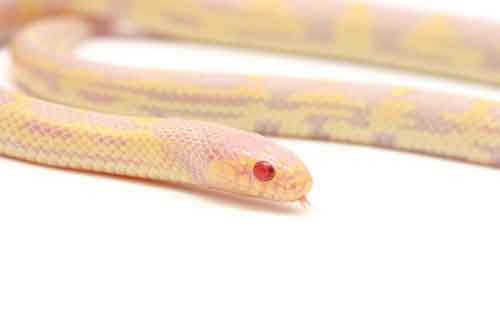The Canary Islands are dealing with an abundance of albino California kingsnakes.
An albino version of the California kingsnake (Lampropeltis getula californiae) has gained a foothold in the Canary Islands, consuming native lizards and other native birds, mammals and other reptiles, according to a report in the Los Angeles Times.
The report says that U.S. Geological Survey biologists are assisting Canary Islands officials in attempting to control the snakes, which were first found on the islands in 2007. "The kingsnakes in question are from a species found in San Diego and bred in captivity," Robert Fisher, a research biologist with the USGS told the paper. Fisher says that some of the snakes were shipped to the Canary Islands and somehow escaped into the wild. It is now estimated that there are thousands of kingsnakes per square mile in the eastern and northwestern regions of Gran Canaria Island.

Photo by Gina Cioli/I-5 Studio
California kingsnakes bred for the pet trade have become established on Gran Canaria in the Canary Islands.
The president of the California chapter of the North American Field Herping Association, Brian Hinds, is also going to Gran Canaria with proposals on how to deal with the snakes. He said that Canary Island officials need to strike hard and fast to control the spread to other islands. One method that has been discussed to control the snakes is to plow infested areas with earth movers, the report said. A 2012 study of the California kingsnake in the Canary Islands that was published by the International Union for Conservation of Nature said that the snake could impact the local reptile population to the point where they will disappear completely from the island.
Want to Learn More?
California Kingsnake Care Sheet
The California kingsnake is one of the most popular snakes in the pet trade and can grow to about six feet in length, though average lengths are around 3 to 4 feet. In the wild, they eat other snakes, including rattlesnakes, as well as small mammals, lizards, and birds.



